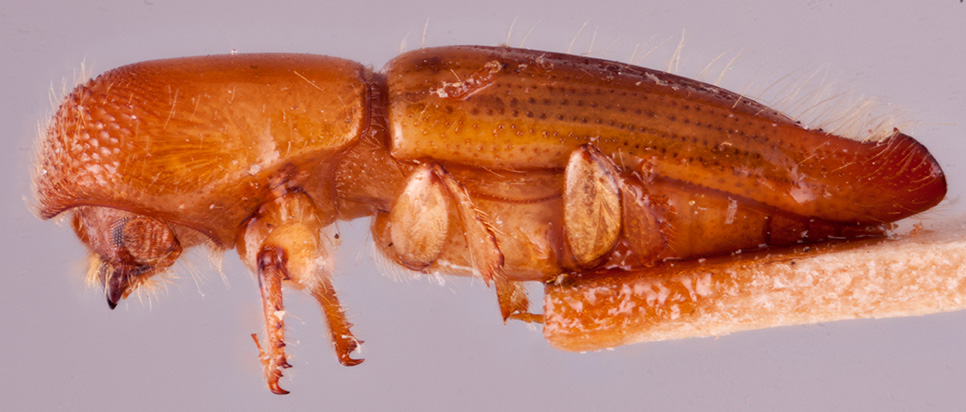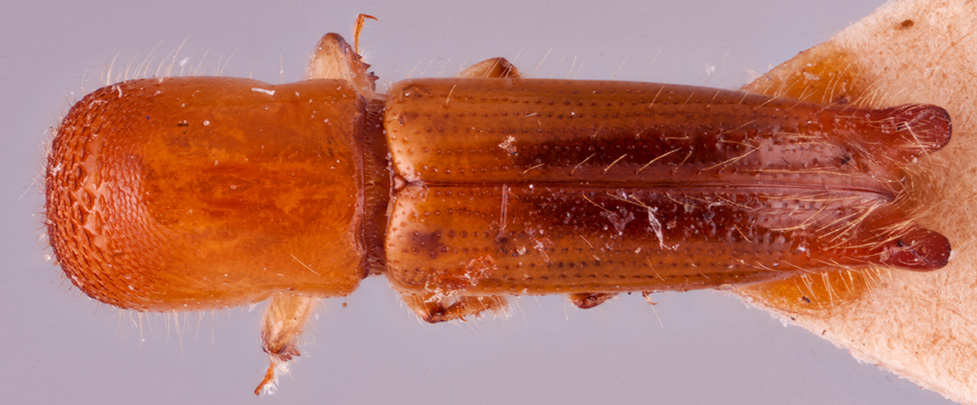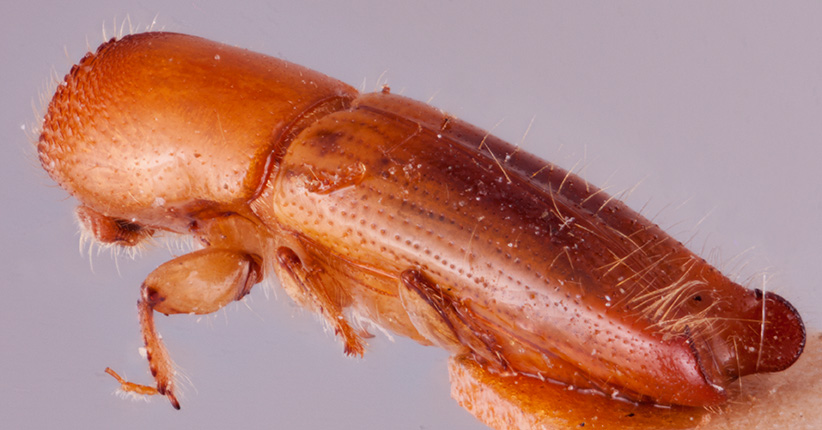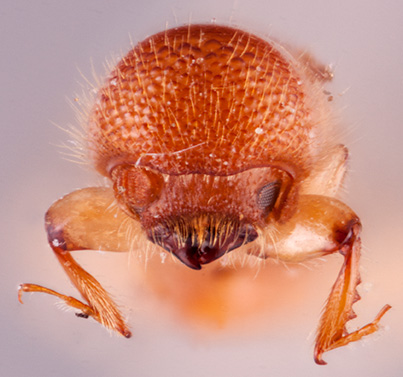Streptocranus mirabilis
|
Streptocranus mirabilis lateral; R.K. Osborn |
|
Streptocranus mirabilis dorsal; R.K. Osborn |
|
Streptocranus mirabilis declivity; R.K. Osborn |
|
Streptocranus mirabilis frontal; R.K. Osborn |
Taxonomic history
Streptocranus mirabilis Schedl, 1939b: 53.
Coptoborus mirabilis (Schedl): Wood and Bright, 1992: 663.
Streptocranus mirabilis Schedl: Hulcr et al., 2007: 583.
Diagnosis
4.1−4.9 mm long (mean = 4.45 mm; n = 3); 3.9−4.08 times as long as wide. The species is the largest Streptocranus and is distinguished by the moderately attenuateattenuate:
gradually tapering apically
 elytra; and dorsaldorsal:
elytra; and dorsaldorsal:
of or relating to the upper surface; opposite of ventral
 margin of elytralelytral:
margin of elytralelytral:
pertaining to the elytra
process with a strong, inwardly-directed denticledenticle:
a small tooth, the sides of which are equal and the tip is above the middle of the base at the level of the elytralelytral:
at the level of the elytralelytral:
pertaining to the elytra
apex
May be confused with
Streptocranus bicolor, S. fragilis, and S. petilus
Distribution
China (Yunnan), Indonesia (Java), West Malaysia, Thailand
Host plants
recorded from Mesua (Calophyllaceae), Quercus (Fagaceae), and Schoutenia (=Actinophora) (Malvaceae) (Kalshoven 1959bKalshoven 1959b:
Kalshoven LGE. 1959b. Studies on the biology of Indonesian Scolytoidea 4. Data on the habits of Scolytidae. Second part. Tijdschrift voor Entomologie 102: 135-173 + pls. 15-22.); probably polyphagous
DNA data
specimens not available for sequencing





